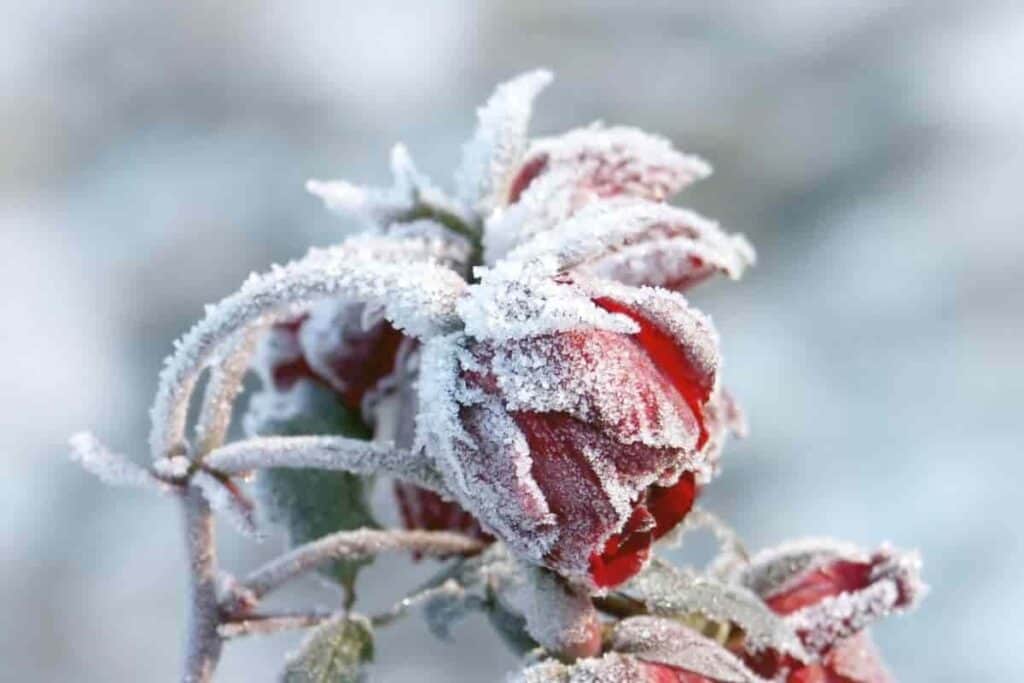In most of our areas, hard frosts have come by mid-November.
Mild weather sometimes holds until Thanksgiving, leaving some hardier annuals such as snapdragons, stocks, sweet alyssum, lobelia, verbena, and petunias still in bloom if they have been protected.

Garden mums and roses can be expected to supply great colors right up to a general freeze-up.
Keeping Down Harmful Insect Populations And Infections
Dead tops of perennials should be removed and burned to destroy diseases and insects that might winter over on them.
This is one of the best ways to keep down populations of harmful insects and decrease infection in the garden.
Perennials are more subject to pest problems from year to year than are annuals.
Nevertheless, it is essential to dig up and remove annuals (root and all) after killing frosts because these plants’ common pests will also overwinter on them.
Many gardeners leave dead plant tops intact over winter to serve as a snow catch, protecting the roots and conserving moisture.
When insects and diseases have been a problem, it would be better to destroy the dead foliage and provide a winter mulch of a more sanitary kind.
Cultivating between perennials before the ground freezes will make the soil more receptive to moisture and kill some grubs and other soil insects.
Loosening the soil also provides a better environment for helpful soil bacteria.
Where annuals have been growing, the soil can be dug deep and left rough.
A 6″ inches layer of barnyard manure on the cultivated ground will bring significant benefits in spring.
The waste can then be used to complete the soil improvement program. Manure also can be placed between perennials.
This, of course, must be done carefully so as not to get too close to them.
Bulb Protection
It is best to get tulip bulbs into the ground as soon as possible so they can start to root.
Cover the soil with a 6″ layer of leaves right after planting the rose bulbs to prevent quick penetration of extreme cold.
Water deeply before placing the mulch. This is a suitable procedure for all bulbs’ planted this fall.
Protecting Roses In Winter
One of the latest methods of protecting roses here is to cover them with leaves several feet deep.
The plants are not filled with soil at the base (the usual method), nor are the tops cut back.
The bed is encircled with chicken wire and leaves arc piled until they make a high mound in the center.
Then chicken wire, boards, or branches are placed on top to hold down the leaves. Growers who have used this method report good results and few losses.
Poisoned mouse bait must be scattered among the plants before covering because the leaf mulch makes a lovely home for mice during winter and the rose canes provide a handy food supply.
Planting Until Freeze-Up
Until freeze-up, dormant shrubs and trees can be planted bare-root, except for the following:
- Roses
- Fruit trees
- Flowering crab apples
- Hawthorn
- Red leafed barberry
- Euonymus
- Russian olive
- Buffalo berry
If balled and burlapped, all of these except roses can be planted safely.
Related: A Winter Hardy Roses
Preparing A New Bed For Roses
Now is the best time to prepare a new bed for roses, which in the North should be planted in spring only.
Garden mums are not entirely hardy here. Usually, the percentage of survival is small.
A sure way of wintering them is to dig a clump (or two) of each variety and plant them in a cold frame.
After freezing weather, cover them deeply with leaves or hay.
Waterproof paper placed overall will keep the plants safely dry during winter.
44659 by Robert A. Phillips
